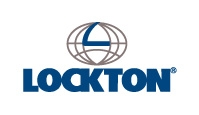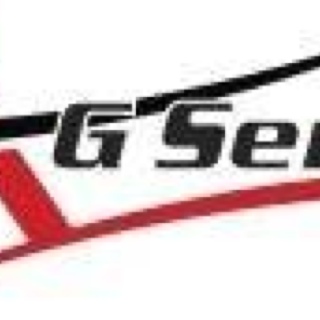Title Page
-
Document No.
-
Audit Title
-
Client / Site
-
Conducted on
-
Prepared by
-
Location
-
Location of Ammonia Plant
-
Are SDS Sheets Current?
Maximum Intended Inventory
-
Bulk Tanks
-
Size (Gallons)
Tank
-
Multiple Tanks?
-
Number of Tanks
-
Total Gallons: # of tanks X size =
-
Rail Car Transport Tanks
-
Size (Gallons)
Tank
-
Multiple Tanks?
-
Number of Tanks
-
Total Gallons: # of tanks X size =
-
Bulk Transport Trailers
-
Size (Gallons)
Tank
-
Multiple Tanks?
-
Number of Tanks
-
Total Gallons: # of tanks X size =
-
Nurse Tanks
-
Size (Gallons)
Tank
-
Multiple Tanks?
-
Number of Tanks
-
Total Gallons: # of tanks X size =
-
Total Quantity (Pounds): (Bulk Tanks + Rail Car Tanks + Bulk Transport Trailers + Nurse Tanks) X 4.6638=
Upper and Lower Perameters
Temperature (Degrees Fahrenheit)
-
Minimum Temperature (Degrees Fahrenheit)
-
Maximum Temperature (Degrees Fahrenheit)
Pressure(Pounds Per Square Inch Gauged)
-
Minimum Pressure (Pounds Per Square Inch Gauged)
-
Maximum Pressure (Pounds Per Square Inch Gauged)
Flow (Gallons Per Minute)
-
Minimum Flow (Gallons Per Minute)
-
Maximum Flow (Gallons Per Minute)
Composition (% Anhydrous Ammonia)
-
Minimum Composition (% Anhydrous Ammonia)
-
Maximum Composition (% Anhydrous Ammonia)
Codes and Standards
-
CGA 2.1 Standards used to design, build, and operate?
-
Are generally accepted and good engineering practices followed?
-
Has their been major changes in the safety information to make it inaccurate?
-
Changes in Information
Change
Storage Tank Information
-
Storage Tank Data Plate
Tank
-
Location of Storage Tank?
-
Vessel/Tank I.D.
-
Manufacturer
-
Serial #
-
Manufacture Date
-
ASME Code
-
Board Registration #
-
Above Ground/Underground
-
Min/Max Design Temperatures (Degrees Fahrenheit)
-
Wall Thickness Shell/Head (inch, mm)
-
Water Capacity (lb, kg, gal, m^3)
-
Outside Surface Area (ft^2' m^2)
-
Is the data plate present and legible?
Compressor/Pump Information
-
VaporCompressor ID
Compressor
-
Location of Vapor Compressor?
-
Manufacturer/Model/Serial #
-
CFM/GPM Pressure (inlet/outlet)
-
Motor Info: Manufacturer/Model/Serial #
-
Motor Info: HP/RPM/Amps
-
Manufacturer's Safe Operation, Maintenance, and Technical Information on Hand?
-
Liquid Pump ID
Liquid Pump
-
Location of Liquid Pump?
-
Manufacturer/Model/Serial #
-
CFM/GPM Pressure (inlet/outlet)
-
Motor Info: Manufacturer/Model/Serial #
-
Motor Info: HP/RPM/Amps
-
Manufacturer's Safe Operation, Maintenance, and Technical Information on Hand.
Storage Tank Appurtenances
-
Pressure Relief Valve
-
Location of Pressure Relief Valve?
-
Set Pressure (psig)
-
Rate of Flow (CFM)
-
Manufacture Date
-
Date Replaced
-
Manufacturer, Serial #
-
Hydrostatic Valves
Hydrostatic Valve
-
Location of Hydrostatic Valve?
-
Set Pressure (psig)
-
Rate of Flow (CFM)
-
Manufacture Date
-
Date Replaced
-
Manufacturer, Serial #
-
Belly Valves
Belly Valve
-
Location of Belly Valve?
-
Manufacturer
-
Model #
-
Liquid or Vapor
-
Pressure Relief Valve Manifold
PRV Manifold
-
Location of Pressure Relief Manifold?
-
Location
-
Manufacturer
-
Model #
-
Emergency Shutoff Valve
Shutoff Valve
-
Location of Emergency Shutoff Valve?
-
Manufacturer
-
Model #
-
Liquid or Vapor
-
Percent Fill Gauge
Gauge
-
Location of Percent Fill Gauge?
-
Manufacturer
-
Model #
-
Approved for anhydrous?
-
Pressure Gauge
Gauge
-
Location of Pressure Gauge?
-
Manufacturer
-
Model #
-
Approved for Anhydrous?
Riser Appurtenances
-
Pressure Relief Valves
Pressure Relief Valve
-
Location of Pressure Relief Valve?
-
Set Pressure (psig)
-
Rate of Flow (CFM)
-
Manufacture Date
-
Date Replaced
-
Manufacturer, Serial #
-
Hydrostatic Valves
Hydrostatic Valve
-
Location of Hydrostatic Valve?
-
Set Pressure (psig)
-
Rate of Flow (CFM)
-
Manufacture Date
-
Date Replaced
-
Manufacturer, Serial #
Liquid Globe Valve
-
Location of Liquid Globe Valve?
-
Manufacturer
-
Model #
-
Valve Size
Vapor Globe Valve
-
Location of Vapor Globe Valve?
-
Manufacturer
-
Model #
-
Valve Size
Liquid Angle Valve
-
Location of Liquid Angle Valve?
-
Manufacturer
-
Model #
-
Valve Size
Vapor Angle Valve
-
Location of Vapor Angle Valve?
-
Manufacturer
-
Model #
-
Valve Size
-
Pull-Away Protection
Pull-Away Protection
-
Location of Pull-Away Protection?
-
Manufacturer
-
Model #
-
Size
-
Hose I.D.
Hose
-
Location of Hose?
-
Manufacturer
-
Working Pressure
-
Manufacture Date
-
Replace By Date
-
Riser Emergency Shutoff Valves
ESV
-
Location of Emergency Shutoff?
-
Manufacturer
-
Serial Number
-
Liquid or Vapor?
Bulk Head Appurtenances
-
Hydrostatic Valves
Hydrostatic Valve
-
Location of Hydrostatic Valve?
-
Set Pressure (psig)
-
Rate of Flow (CFM)
-
Manufacture Date
-
Date Replaced
-
Manufacturer, Serial #
Back Check Valve
-
Location of Back Check Valve?
-
Manufacturer
-
Model #
-
Valve Size
Liquid Globe Valve
-
Location of Liquid Globe Valve?
-
Manufacturer
-
Model #
-
Valve Size
Vapor Globe Valve
-
Location of Vapor Globe Valve?
-
Manufacturer
-
Model #
-
Valve Size
Bulk Head Emergency Shutoff
-
Emergency Shutoff Valve
Emergency Shutoff
-
Location of Emergency Shutoff Valve?
-
Manufacturer
-
Model #
-
Liquid or Vapor
Excess Flow Valve
-
Location of EFV.
-
Valve I.D.
-
Max Allowed Flow (GPM)
-
Manufacturer
-
Model #
-
Management Signature













